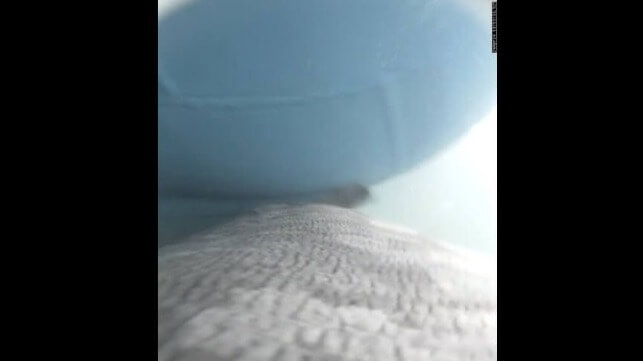ICYMI
Ship Strike on Shark Captured on Video for the First Time

Ship strike incidents are widely believed to be a contributing factor in the declining numbers of many shark species. But until now, there has never been any video evidence of what happens when a ship strikes a shark, or any other large marine creature.
Now, researchers at the Oregon State University (OSU) have offered a first-hand glimpse of an actual event of a basking shark experiencing a boat strike. The researchers have released rare footage of about six minutes in which a shark was struck by a boat. The sequence and the change in the shark's behavior may help scientists understand the impact that sharks and marine mammals experience in the event of strikes.
Barely a few hours after strapping a camera to the back of an endangered basking shark off the coast of Ireland in April, a team from Oregon State University captured the disturbing moment of the newly-tagged shark being struck by a boat.
Unfortunately, the researchers could not tell whether the shark, a female about seven meters long, survived the strike. The camera and the activity measurement device were designed to release themselves from the shark at a predetermined time, which happened about seven hours after the strike. However, data gathered showed the shark never resumed feeding or any other normal behavior during the period it was being monitored.
Also, the footage showed visible damage to the shark’s skin, paint marks and an abrasion, but no apparent bleeding or open wound. The team noted that non-lethal injuries can have short- and long-term consequences for a shark or whale after a ship strike..
“This is the first ever direct observation of a ship strike on any marine megafauna that we’re aware of. The shark was struck while feeding on the surface of the water and it immediately swam to the seafloor into deeper, offshore waters, a stark contrast to its behavior prior to the strike,” said Taylor Chapple, a shark researcher at OSU’s Hatfield Marine Science Center.
Listed as globally endangered by the International Union for Conservation of Nature, the basking sharks are the second largest known fish, reaching more than eight meters in length. Estimates show that only around 20,000 of them remain in the world with Ireland being one of the only known locations where the mammals continue to aggregate in large numbers.
The OSU researchers targeted the basking sharks due to their behaviors, particularly filter feeding at the water’s surface, a trait similar to some whales. While this behavior makes them more susceptible to boat strikes, basking sharks often sink when killed - unlike whales. This makes it hard to gauge mortality rates.
As part of their research to learn more about the basking shark foraging and eating habits, scientists tagged a camera and activity monitor system on several of the mammals.
“The fact that a shark we fitted our ‘Fitbit’ to was struck in this area within a few hours underlines just how vulnerable these animals are to boats and highlights the need for greater education in how to mitigate against such strikes,” said Nicholas Payne, an assistant professor at Trinity College Dublin’s School of Natural Sciences and co-author of the study.
No comments:
Post a Comment